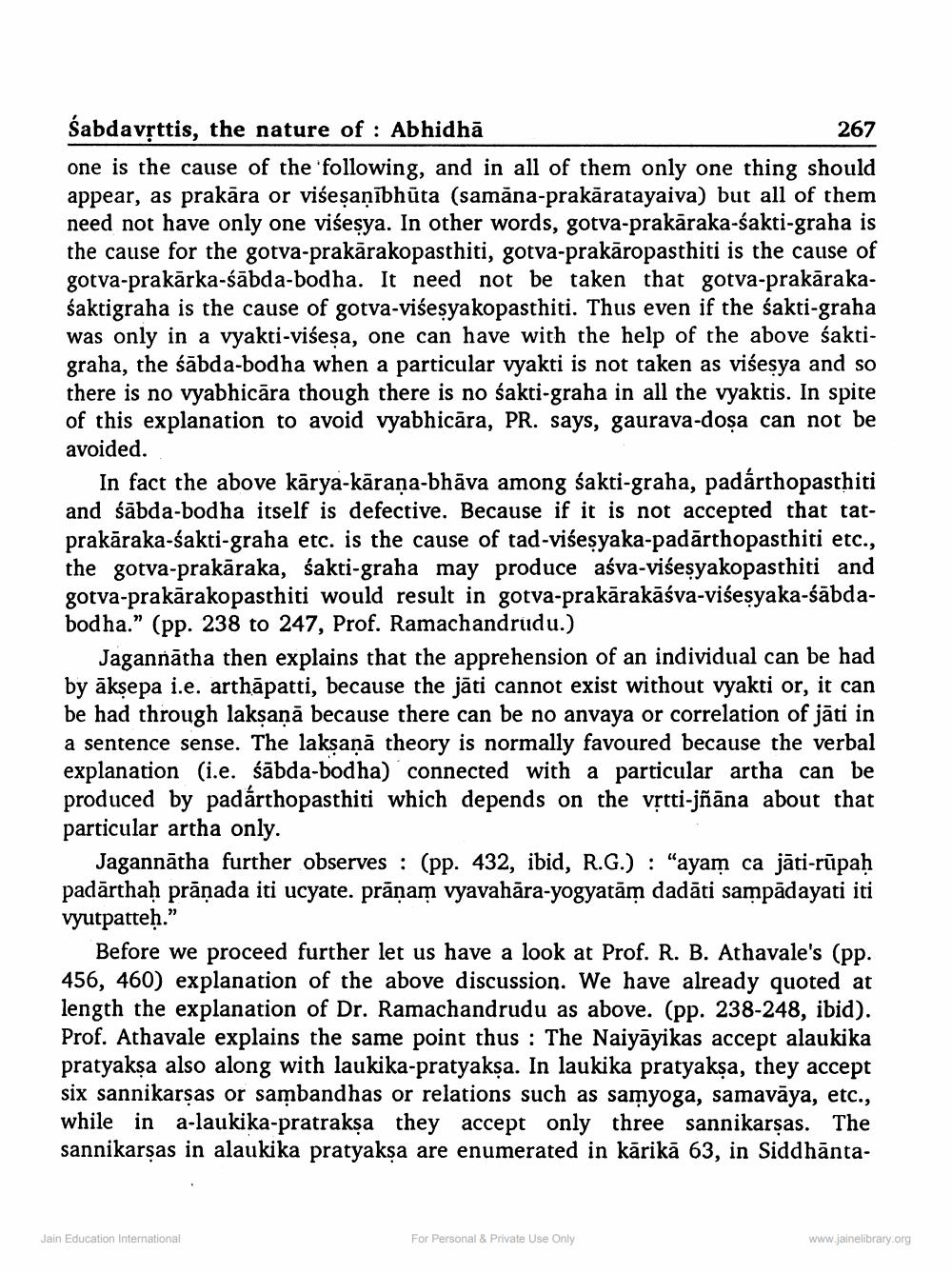________________
Śabdavṛttis, the nature of : Abhidhā
267
one is the cause of the following, and in all of them only one thing should appear, as prakāra or viseṣaṇībhūta (samāna-prakāratayaiva) but all of them need not have only one viseṣya. In other words, gotva-prakāraka-śakti-graha is the cause for the gotva-prakarakopasthiti, gotva-prakāropasthiti is the cause of gotva-prakārka-śābda-bodha. It need not be taken that gotva-prakārakaśaktigraha is the cause of gotva-viśeşyakopasthiti. Thus even if the śakti-graha was only in a vyakti-viśeṣa, one can have with the help of the above śaktigraha, the śābda-bodha when a particular vyakti is not taken as viśesya and so there is no vyabhicāra though there is no śakti-graha in all the vyaktis. In spite of this explanation to avoid vyabhicāra, PR. says, gaurava-dosa can not be avoided.
In fact the above kārya-kāraṇa-bhāva among śakti-graha, padárthopasthiti and sabda-bodha itself is defective. Because if it is not accepted that tatprakaraka-śakti-graha etc. is the cause of tad-viseṣyaka-padārthopasthiti etc., the gotva-prakaraka, śakti-graha may produce aśva-viśeşyakopasthiti and gotva-prakarakopasthiti would result in gotva-prakārakāśva-viśeṣyaka-śābdabodha." (pp. 238 to 247, Prof. Ramachandrudu.)
Jagannatha then explains that the apprehension of an individual can be had by ākṣepa i.e. arthapatti, because the jäti cannot exist without vyakti or, it can be had through lakṣaṇā because there can be no anvaya or correlation of jāti in a sentence sense. The lakṣaṇa theory is normally favoured because the verbal explanation (i.e. sabda-bodha) connected with a particular artha can be produced by padárthopasthiti which depends on the vṛtti-jñāna about that particular artha only.
Jagannatha further observes (pp. 432, ibid, R.G.) "ayam ca jāti-rūpaḥ padarthaḥ prāṇada iti ucyate. prāṇam vyavahāra-yogyatām dadāti sampādayati iti vyutpatteḥ."
Before we proceed further let us have a look at Prof. R. B. Athavale's (pp. 456, 460) explanation of the above discussion. We have already quoted at length the explanation of Dr. Ramachandrudu as above. (pp. 238-248, ibid). Prof. Athavale explains the same point thus: The Naiyāyikas accept alaukika pratyakṣa also along with laukika-pratyakṣa. In laukika pratyakṣa, they accept six sannikarṣas or sambandhas or relations such as samyoga, samaväya, etc., while in a-laukika-pratrakṣa they accept only three sannikarṣas. The sannikarṣas in alaukika pratyakṣa are enumerated in kārikā 63, in Siddhānta
Jain Education International
For Personal & Private Use Only
www.jainelibrary.org




